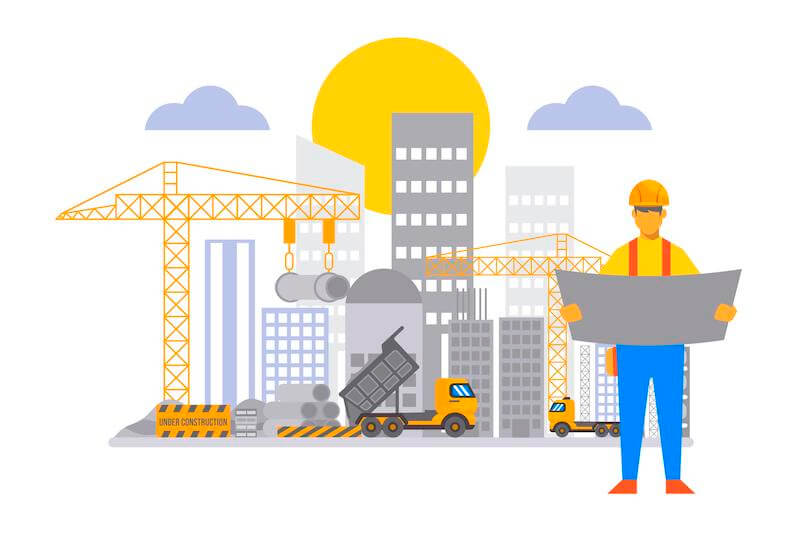What is a contract amendment?
| What is a contractual agreement? | https://www.trackado.com/blog/contractual-agreement/ |
Ever dashed into an agreement, shaking hands with a big toothy grin, and finding out that things aren’t shaping up as you’d imagined? Contracts are like those Russian nesting dolls, aren’t they? Open one, and discover another. Today, we’re going to peek into the ‘contract amendment.’
Now, why should you care about contract amendments? You’ve got a zillion other things on your plate!” Hold on to your hat because understanding contract amendments is not just crucial—it’s a game-changer. It’s the ace up your sleeve in a high-stakes poker game. The life vest that keeps you afloat in a sea of clauses. And the best part? You don’t need a law degree to get a handle on it.
In this fast-paced world where time is money, and money is pretty important, knowing your way around contract amendments can save you from those “I wish I knew this earlier!” moments. So, buckle up as we decode the jargon and make sense of contract amendments, one easy-to-understand nugget at a time.
Why Contract Amendments are Necessary
Imagine you’ve signed a contract to supply the world’s softest teddy bears to a retail giant—a big, shiny deal. But then, your supplier runs into a hiccup and can’t provide the extra fluffy stuffing you need. You’ll have to swap it out with a slightly less fluffy one (still top-notch). Now, does that mean you tear up the contract and start fresh? No, this is where a contract amendment steps in, saunters over, and says, “I got this.”
So, amid business unpredictability, contract amendments are like the superheroes we didn’t know we needed. Whether it’s an unexpected change of circumstances, such as our teddy bear example, or a simple adjustment to payment terms or delivery schedules, contract amendments can come to the rescue.
Maintaining Fairness, Upholding Relevance
Now, on to the why of it. You see, contracts are more than just legal documents—they symbolize fairness, a nod to a level playing field. They’re about shaking hands (or elbow bumping in the age of social distancing) and saying, “We’re in this together, pal!” But what happens when the rules of the game change? Do we pack up and go home? Not on the watch of contract amendments!
Contract amendments ensure the scales of fairness don’t tip too heavily on one side. They help update contracts, keep them relevant, and ensure everyone agrees with the terms. It’s like updating your phone’s software. You don’t dump the phone; you just make sure it’s got the latest iOS or Android version. Similarly, contract amendments help your agreement stay updated, relevant, and fair.
So, that’s the gist of why contract amendments are such a big deal. They’re the oil that keeps the machinery of business relationships running smoothly. They’re not just about crossing the Ts and dotting the Is—they’re about upholding the spirit of mutual respect and cooperation. That’s something worth knowing, isn’t it?
Types of Contract Amendments
Contract amendments are more than just a one-size-fits-all kind of deal. Just as we have different tools in a toolbox, there are different types of contract amendments for various scenarios. Before you bolt at the thought of more legal jargon, relax. We will make this as easy as pie, one slice at a time.
The Mighty ‘Addendum’
In the world of contract amendments, an addendum is like the extra topping on your pizza. It doesn’t change the original contract; it simply adds new provisions or further clarifications to the existing terms. Let’s say you’ve hired a top-notch designer to jazz up your website. Midway, you decide to add a blog section. Adding this new requirement can be neatly done with an addendum. Easy peasy, lemon squeezy!
The Slick ‘Supplement’
Then we have the supplement, another type of contract amendment. Imagine it as an expansion pack to your favorite board game. It allows you to bring in entirely new elements not part of the original contract. Say you’re hosting a music festival, and suddenly, Lady Gaga agrees to perform—cue fan screams! A supplement can help you adjust the contract to include her showstopper performance without disturbing the existing agreements. How cool is that?
The Handy ‘Amendment’
Last but not least, we have the titular amendment itself. This is your go-to when you need to change or tweak an existing term in the contract. Let’s go back to our teddy bear scenario. You agreed to provide the softest teddy bears, but now you have slightly less fluffy stuffing. An amendment allows you to modify that term while the rest of the contract stays intact.
Voila! You’ve just become familiar with the primary types of contract amendments—addendums, supplements, and amendments. They’re the invisible gears that help business relationships evolve and adapt while keeping things fair and square.
How to Write a Contract Amendment
Now that we’ve dipped our toes into the world of contract amendments, it’s time to dive into the deep end. We’re about to learn the craft of writing a contract amendment. But fear not! I promise you; it’s less about legal jargon and more about logical steps.
- Identify the Need for Amendment
First, you need to pinpoint why a contract amendment is required. It’s like realizing your soup needs a pinch more salt—it’s all about identifying what’s lacking or what’s changed. Remember, the goal is to keep the contract fair, relevant, and in line with the evolving realities of your business relationship.
- Review the Original Contract
Once you’ve identified the need, the next step is to review the original contract. Think of it as revisiting the recipe before adjusting the seasoning. Ensure you’re familiar with the existing terms and any provisions regarding amendments. You wouldn’t want to make changes that conflict with any existing clauses, would you?
- Draft the Amendment
Now comes the part you’ve been waiting for: drafting the contract amendment. First, clearly state the parties involved, the original contract’s date, and the amendment’s purpose. Then, detail the changes, whether it’s an addition (addendum), an entirely new section (supplement), or a modification to existing terms (amendment). Think of this as your moment to play the maestro, orchestrating the perfect symphony of terms and conditions.
- Get the Parties Involved
A contract amendment isn’t a solo performance. It requires the harmony of all parties involved. After drafting the amendment, share it with the other party or parties. Welcome their input and be prepared for some back-and-forth until you all hit the right notes. And remember, a contract amendment is a collaborative composition, not a battle of egos.
- Review, Sign, and Implement the Amendment
The final step is to review the amendment, ensuring it fits everyone’s interests and legal requirements. Once that’s done, it’s signing time! Each party should sign the amendment, which should be attached to the original contract. Voila! You’ve just written and implemented a contract amendment.
By now, you’re not just familiar with contract amendments—you’re practically an expert! You can navigate changes, maintain the relevancy of your contracts, and even craft your own amendments. You’re ready to face the dynamic world of contracts with confidence and agility. So go ahead, take that bow—you’ve earned it!
Legal Aspects of Contract Amendments
While we’ve been having a great time exploring contract amendments, we must remember the legal aspect of things. After all, when it comes to contracts, the law is the compass that guides us.
Legal Considerations when Amending a Contract
Before making any changes to a contract, you need to consider a few key points. You’ve got to dot your i’s and cross your t’s, metaphorically speaking.
Firstly, it’s essential to understand the nature of the contract you’re amending. Some contracts have ‘no oral modification’ clauses, stipulating that amendments can’t be made orally and must be in writing.
Next, both parties must agree to the amendment for it to be legally binding. It’s just like salsa dancing—both parties have to be in sync, or you’ll step on each other’s toes!
Lastly, the amendment should not lead to illegal activity or contain anything against public policy. A contract amendment turning a bakery business into an illicit cookie smuggling operation? That’s a big no-no!
Legal Validity of a Contract Amendment
“Is this contract amendment legally binding?” I hear you ask. Well, if you’ve done everything right—respected the terms of the original contract, obtained agreement from all parties, and ensured the amendment is within the law—then yes, it is.
In the eyes of the law, a valid contract amendment holds the same weight as the original contract. But remember, the devil is in the details, and it’s crucial to have the amendment checked by a legal professional.
Feel free to seek legal advice if you need clarification on any aspect of your contract amendment. Just like you’d consult a doctor when you’re feeling under the weather, it’s wise to talk to a lawyer when you’re in the realm of contracts and amendments.
As we’ve explored, the legal aspects of contract amendments are far from a dry subject. Instead, it’s a fascinating journey through the law landscape, making sure your contract is useful, sound, and legally binding. After all, contract amendments are not just about changing words on paper; they’re about evolving business relationships within the framework of the law. And that, my friends, is something truly remarkable.
Conclusion
We’ve seen how these amendments play a massive part in keeping contracts relevant and up-to-date. Changes happen all the time in life and business. And these amendments are like the contract’s way of rolling with the punches, ensuring everything makes sense for everyone involved.
Learn more and enhance your contract management skills
Let’s dive deeper into the world of contracts. Learn how contract management software can help you achieve contract performance transparency.
Read more: Achieve contract performance transparency with contract management software.











